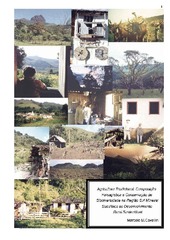Paisagística e conservação de biodiversidade na região sul mineira: subsídios ao desenvolvimento rural sustentável.
Resumen
Habitat loss is the largest factor contributing to the current regional species extinction event. The implementation of parks and reserves is an important strategy to protect ecosystems, but planning is necessary to adjust socioeconomic
development and natural resources conservation, especially around protected areas. This study was realized in some municipalities of Mantiqueira mountain range, south of Minas Gerais state (Brazil). The objective was to obtain, organize and integrate historic, cultural, agrarian and ecological information, contributing for the environmental planning based on the rational use of natural resources. The utilization of different methodologies in analysis process allowed to provide important results to understand the environmental context, as well as permitted to supply complementary development proposals for this region. The results support family farmer as an agrarian model that propitiates best possibilities to natural areas conservation and management.
